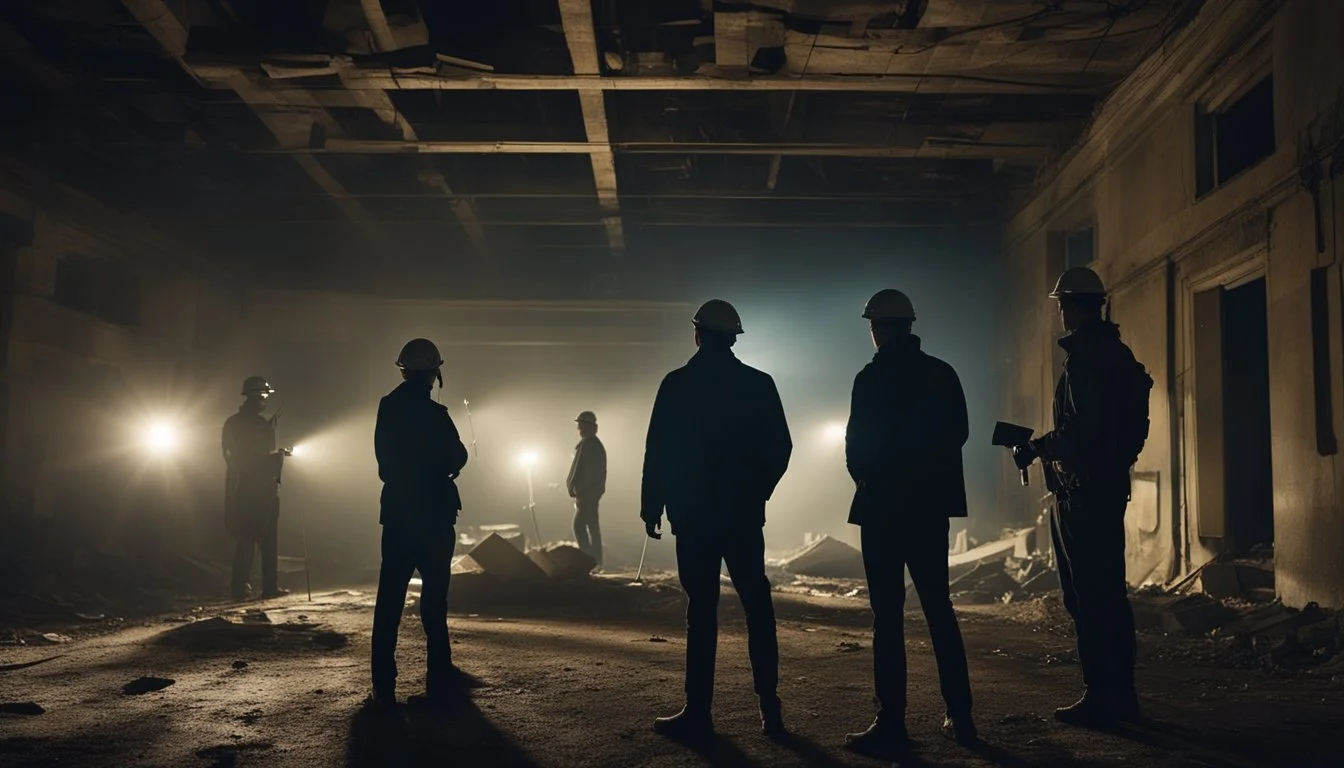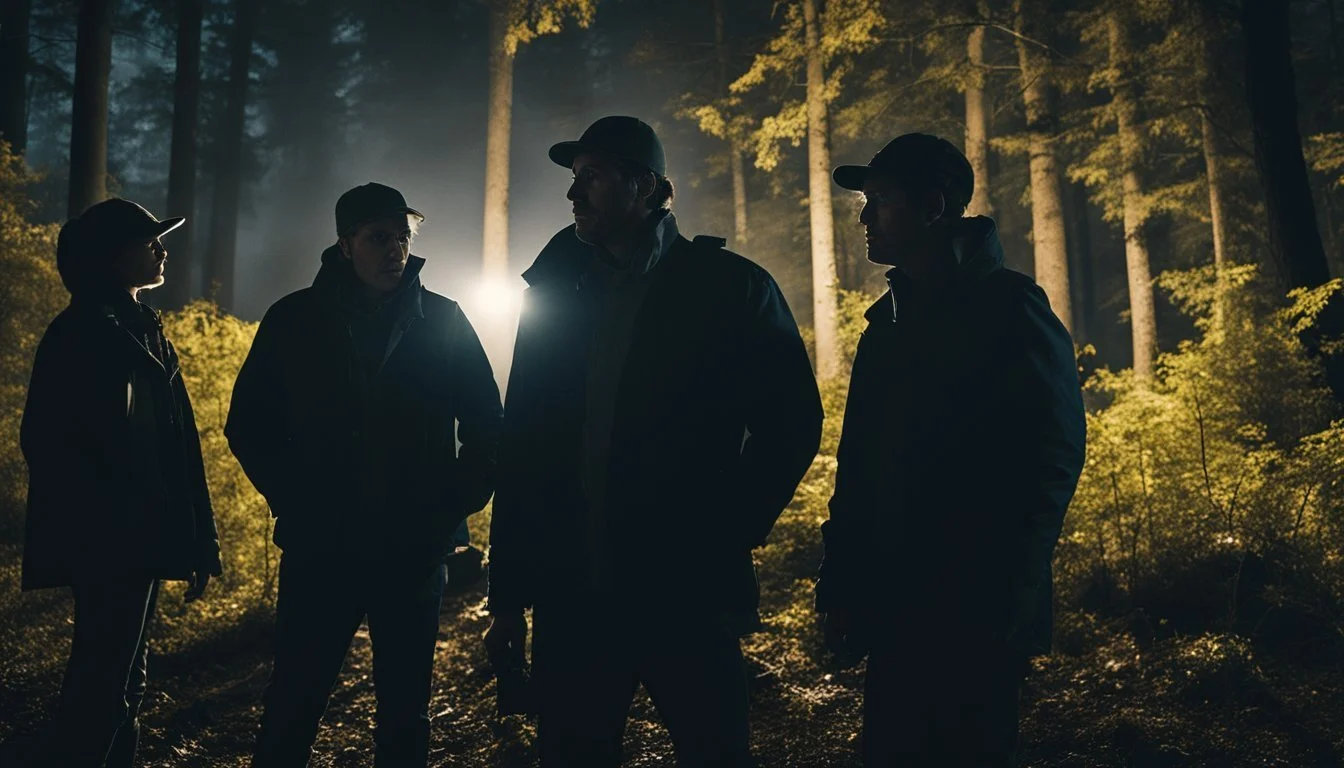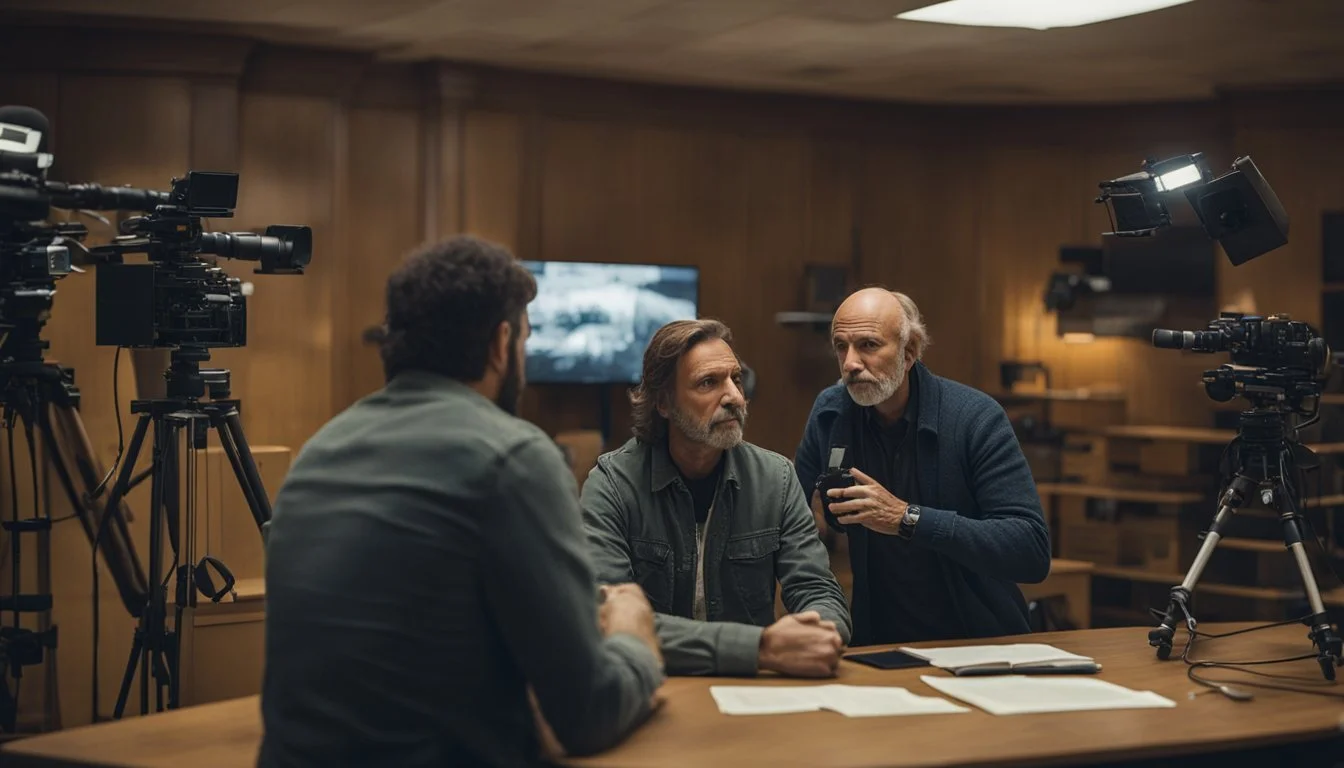Cropsey Investigation Controversy Examines True Crime Documentary Ethics
The 2009 documentary "Cropsey" blends urban legend with true crime investigation, exploring a series of child disappearances on Staten Island. Filmmakers Joshua Zeman and Barbara Brancaccio set out to examine the origins of the "Cropsey" boogeyman story from their childhood, only to uncover a disturbing real-life case.
The film's focus shifts to Andre Rand, a convicted child kidnapper whose crimes may have inspired or been inspired by the Cropsey legend. Through a mix of archival footage, interviews, and their own amateur detective work, Zeman and Brancaccio attempt to shed light on Rand's possible involvement in multiple unsolved cases.
While "Cropsey" garnered praise for its atmospheric storytelling and exploration of local folklore, it also raised questions about the ethics of amateur true crime investigations. The filmmakers' approach, described as "cheerfully random" by some critics, sparked debates about the responsibility of documentarians when dealing with sensitive, unresolved criminal cases.
Backdrop: The Cropsey Urban Legend
The Cropsey urban legend terrorized Staten Island for decades, blending local history with chilling folklore. This nightmarish tale captivated residents and sparked widespread fear, especially among children and teenagers.
From Myth to Mainstream Media
Cropsey emerged as a boogeyman figure in Staten Island's collective imagination during the 1970s. The legend described a deranged killer who targeted children, often said to be hiding in abandoned buildings or lurking in wooded areas.
As the story spread, it took on various forms. Some versions portrayed Cropsey as an escaped mental patient, while others depicted him as a grieving father driven mad by the loss of his own child. The legend gained traction through word-of-mouth, particularly at summer camps where counselors used it to frighten campers.
Media attention amplified the Cropsey myth. Local news reports and true crime shows featured the legend, blurring the lines between fact and fiction. This coverage helped cement Cropsey's place in New York's urban folklore.
Staten Island's Dark History
Staten Island's real-life tragedies fueled the Cropsey legend. The borough's history of institutionalized care for individuals with mental illnesses and developmental disabilities played a significant role in shaping the myth.
Willowbrook State School, a notorious facility for children with intellectual disabilities, operated on Staten Island until 1987. Reports of abuse and neglect at Willowbrook horrified the public and contributed to the area's sinister reputation.
A series of child disappearances in the 1970s and 1980s further intensified fears. These real cases became intertwined with the Cropsey legend, as locals speculated about connections between the missing children and the mythical killer.
The abandoned buildings and wooded areas of Staten Island provided the perfect backdrop for the Cropsey tale. These locations, often associated with the borough's institutional past, became focal points in the urban legend and subsequent investigations.
The Genesis of the 'Cropsey' Documentary
The 'Cropsey' documentary emerged from childhood memories and urban legends in Staten Island. Filmmakers Joshua Zeman and Barbara Brancaccio set out to explore the origins of a local boogeyman tale, leading them to uncover a real-life criminal case.
Joshua Zeman and Barbara Brancaccio: The Filmmakers Behind the Scene
Joshua Zeman and Barbara Brancaccio grew up in Staten Island, hearing stories of 'Cropsey'. This shared experience sparked their curiosity and drove them to investigate further.
The duo's background in filmmaking and journalism provided them with the skills to pursue this project. They combined their storytelling abilities with investigative techniques to delve into the urban legend.
Zeman and Brancaccio's local knowledge proved invaluable. Their familiarity with Staten Island allowed them to navigate the community and gain access to key sources.
Intent and Ethos of the Documentary Production
The filmmakers aimed to uncover the truth behind the 'Cropsey' legend. They sought to explore how urban myths intersect with real-life events.
Their approach blended journalistic inquiry with documentary storytelling. They interviewed local residents, examined historical records, and visited significant locations like the abandoned Willowbrook mental institution.
The production focused on the case of Andre Rand, a convicted child kidnapper. Zeman and Brancaccio investigated his potential connection to missing children cases in Staten Island during the 1970s and '80s.
Their work raised questions about the nature of fear in communities and how stories evolve over time. The documentary aimed to shed light on a dark chapter in Staten Island's history.
Understanding the Investigative Approach
The amateur sleuths behind "Cropsey" employed a multi-faceted strategy to unravel the urban legend and associated crimes. Their methods combined traditional investigative techniques with modern documentary filmmaking approaches.
Research Methodology
The filmmakers began by extensively researching historical records and news archives related to the Cropsey legend. They pored over old newspaper clippings, police reports, and court documents to establish a timeline of events. Online databases and library resources provided additional context about Staten Island's history and the Willowbrook State School.
The team also explored physical locations connected to the case. They visited abandoned buildings, photographed key sites, and recorded video footage to visually document their findings. This hands-on approach allowed them to better understand the geography and atmosphere surrounding the Cropsey story.
Interviews and First-Hand Accounts
Personal interviews formed a crucial component of the investigation. The filmmakers spoke with a wide range of individuals connected to the case, including:
Local residents who grew up with the Cropsey legend
Former Willowbrook State School employees
Police officers involved in related investigations
Families of missing children
These first-hand accounts provided valuable insights and emotional depth to the documentary. The team used both on-camera interviews and off-the-record conversations to gather information.
Geraldo Rivera's Influence
Geraldo Rivera's 1972 exposé on the Willowbrook State School played a significant role in shaping the "Cropsey" investigation. The filmmakers studied Rivera's original footage and reporting techniques. They analyzed how his work brought attention to the institution's deplorable conditions.
Rivera's methods influenced their own approach to investigative journalism. The team sought to balance shocking revelations with ethical considerations for their subjects. They also examined how Rivera's reporting impacted public perception of Willowbrook and potentially contributed to the Cropsey legend.
The Reality of the Institution
Willowbrook State School on Staten Island was a symbol of the dark side of institutionalization. Its conditions shocked the public and spurred major reforms in the treatment of individuals with developmental disabilities.
Institutionalization and Its Impact
Willowbrook housed over 6,000 residents at its peak in the 1960s, far exceeding its intended capacity. Severe overcrowding led to inhumane living conditions. Residents faced neglect, abuse, and inadequate medical care. Many developed preventable illnesses due to unsanitary environments.
The institution's practices reflected outdated attitudes toward disabilities. Residents were often isolated from society with little hope for reintegration. This segregation reinforced stigma and misconceptions about people with developmental disabilities.
Willowbrook's exposure in the 1970s sparked public outrage. It became a catalyst for deinstitutionalization movements and disability rights advocacy across the United States.
Glimpse Inside the Mental Institution
Willowbrook's interior was a stark contrast to its pastoral exterior. Wards were overcrowded, with beds crammed together in large open rooms. Understaffing meant many residents spent their days unattended in bare, locked rooms.
Sanitation was a major issue. Reports described residents sitting in their own waste due to lack of toileting assistance. Hepatitis was rampant, with some doctors unethically using residents for vaccine studies.
Despite good intentions of some staff, systemic problems prevailed. Limited resources and overwhelming numbers created an environment where abuse could occur unchecked. The institution's closed nature shielded these conditions from public view for decades.
The Crimes at the Core
The Cropsey investigation centered on a series of chilling crimes that shook Staten Island. Multiple children vanished without a trace, leaving a community gripped by fear and suspicion.
Chronicle of Disappearances
The first disappearance occurred in 1972 when 5-year-old Alice Pereira vanished from her apartment complex. In 1981, 7-year-old Holly Ann Hughes went missing while walking home.
11-year-old Tiahease Jackson disappeared in 1983. The following year, 12-year-old Henry Gafforio vanished after visiting a local deli.
These cases remained unsolved for years, baffling investigators and terrifying residents. The lack of evidence and seemingly random nature of the abductions fueled widespread panic.
Suspicion and Subsequent Murder Cases
Andre Rand emerged as a prime suspect in the disappearances. His criminal history and proximity to the crime scenes drew police attention.
In 1987, Jennifer Schweiger, a 12-year-old with Down syndrome, went missing. Her body was found near the grounds of the Willowbrook State School, where Rand had worked.
Rand was arrested and convicted for Jennifer's kidnapping and murder. This case reignited interest in the earlier disappearances.
Investigators linked Rand to the previous crimes, though conclusive evidence remained elusive. He was later convicted in the Holly Ann Hughes case, receiving another lengthy sentence.
Law Enforcement and Legal Scrutiny
The 'Cropsey' investigation sparked intense scrutiny from law enforcement and legal experts. Police faced challenges in separating fact from fiction, while detectives worked to uncover key revelations.
Police Investigations and Challenges
Police departments grappled with the influx of amateur sleuthing surrounding the 'Cropsey' case. Officers had to sift through a flood of tips and theories from the public, many fueled by the documentary's claims.
This created a strain on resources as police tried to verify leads and separate credible information from speculation. Some departments expressed frustration at the filmmakers for stirring up public interest without solid evidence.
The documentary's accusations also led to renewed investigations of cold cases. Police had to revisit old files and re-interview witnesses, a time-consuming process that pulled resources from other active cases.
Detective Insights and Revelations
Experienced detectives offered valuable insights into the 'Cropsey' investigation. They highlighted the importance of forensic evidence and witness testimony over speculation and coincidence.
Several detectives criticized the filmmakers' methods, noting that their amateur approach may have compromised potential evidence. They emphasized the need for proper chain of custody and interview techniques in criminal investigations.
Some detectives, however, acknowledged that the renewed interest led to fresh leads. In a few instances, new witnesses came forward with previously undisclosed information, prompting further investigation.
Detectives also stressed the ethical considerations of publicly naming suspects without sufficient evidence. They cautioned against the potential harm to individuals and families caught up in unfounded accusations.
Ethical Inquiry: Investigative Journalism vs. Cinematic Storytelling
The 'Cropsey' investigation raises important questions about the intersection of journalistic ethics and documentary filmmaking. This complex interplay challenges creators to navigate truth-telling and storytelling responsibilities.
Balancing Fact With Narrative
Documentary filmmakers face unique challenges in presenting factual information while crafting a compelling narrative. They must carefully weigh the need for accuracy against the desire to engage audiences. This balancing act often involves selectively presenting information and shaping the story's structure.
Ethical considerations come into play when deciding which details to include or omit. Filmmakers may be tempted to emphasize more sensational elements at the expense of nuanced facts. The pressure to create a cohesive narrative can sometimes lead to oversimplification of complex issues.
Maintaining journalistic integrity while employing cinematic techniques requires constant vigilance. Filmmakers must critically examine their choices to ensure they aren't misrepresenting events or people for dramatic effect.
Potential for Sensationalism
The true crime genre, which often blends investigative journalism with entertainment, carries a heightened risk of sensationalism. Filmmakers may be drawn to shocking or emotionally charged aspects of a case to captivate viewers.
This approach can lead to ethical pitfalls:
Overemphasis on gruesome details
Exploitation of victims or their families
Unfair portrayal of suspects or accused individuals
Responsible filmmakers must resist the urge to prioritize shock value over responsible reporting. They should consider the potential real-world impact of their work on those involved in the case.
Striking a balance between engaging storytelling and ethical journalism requires careful consideration. Filmmakers should seek to inform and enlighten audiences without resorting to manipulative tactics or sacrificing accuracy.
Public Perception and Impact
The "Cropsey" documentary sparked intense public interest and debate about local urban legends and unsolved crimes. Its unconventional investigative approach and dramatic storytelling captivated audiences while raising ethical questions.
The Documentary's Reception
"Cropsey" received critical acclaim upon its 2009 release. Many praised its atmospheric portrayal of Staten Island folklore and the filmmakers' tenacious pursuit of the truth. Viewers were drawn in by the blend of urban legend, true crime, and amateur detective work. Some critics, however, expressed concerns about the documentary's sensationalist elements and potential exploitation of victims' families. The film's ambiguous ending left audiences divided, with some finding it thought-provoking and others frustrated by the lack of concrete answers.
Influence on Popular Culture and Policy
"Cropsey" helped popularize the true crime genre and inspired a wave of amateur sleuthing documentaries. Its success paved the way for similar projects exploring unsolved cases and local legends. The film sparked renewed interest in cold cases, leading to increased public pressure on law enforcement to reexamine old evidence. It also raised awareness about the treatment of mentally ill patients in institutions like Willowbrook State School. Some policymakers cited the documentary when advocating for improved oversight of care facilities and resources for solving cold cases.
Conclusion
The 'Cropsey' investigation blurred the lines between amateur sleuthing and documentary filmmaking, raising important questions about ethics and responsibility in true crime storytelling.
Reassessing the 'Cropsey' Phenomenon
The 'Cropsey' documentary sparked public interest but also faced criticism for its methods. While it brought attention to unsolved cases, some viewed it as sensationalistic.
The filmmakers' approach highlighted the challenges of balancing journalistic integrity with compelling storytelling. Their investigation uncovered new leads but also risked interfering with official police work.
The film's impact on the local community was mixed. It revived painful memories for some residents while prompting others to share previously undisclosed information.
'Cropsey' serves as a case study in the complex relationship between media, law enforcement, and public perception in cold cases. It demonstrates both the potential and pitfalls of amateur investigations in the digital age.










